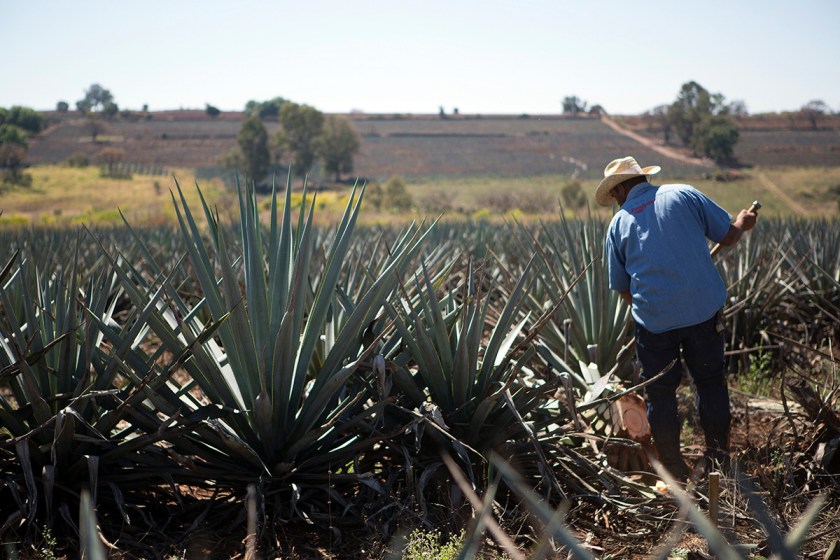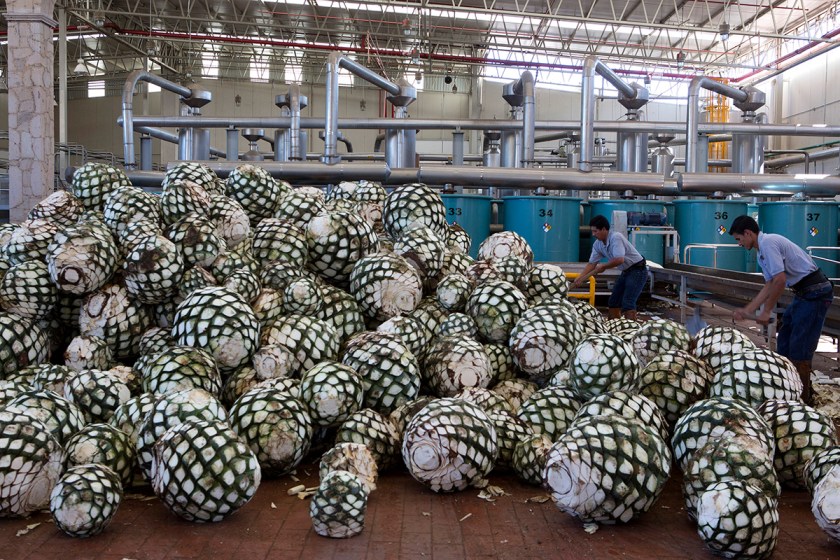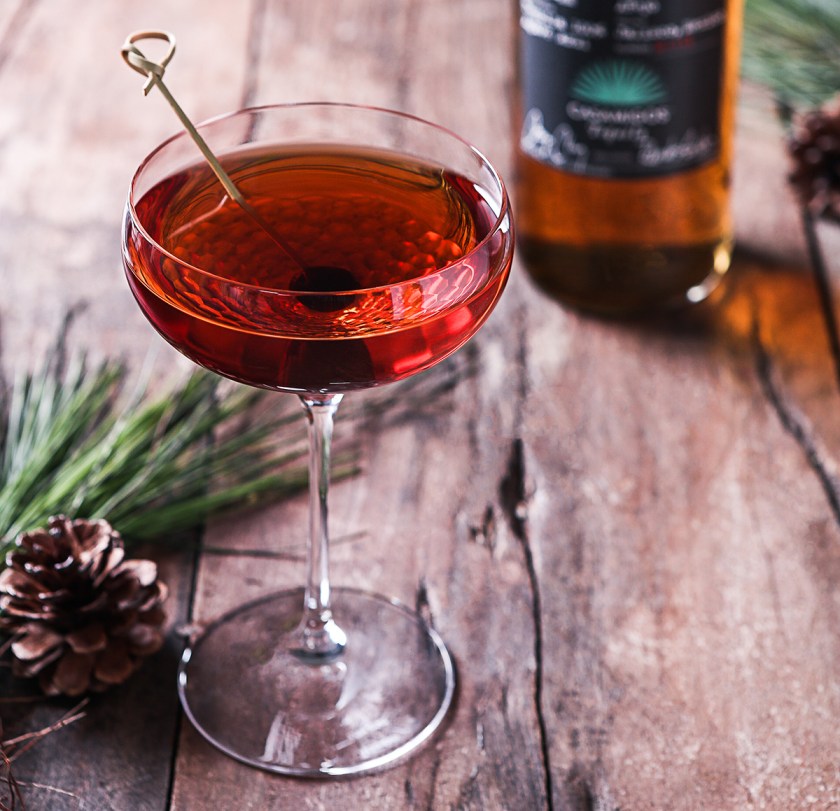
Most of what you know about tequila likely begins and ends at your local Mexican restaurant or bar. You sprinkle a little salt on the fat part of your thumb, lick it, suck down a shot, and bite down on a lime. Again and again and again. It’s a celebratory drink; one that’s best drunk in series. And for those of you who haven’t ruined it for yourself in college or at your frat house, it’s one of the most complex flavors bartenders can offer you. It can also get pretty pricey.
But it’s also a fairly strange spirit. According to the Liquor.com video below, tequila can only be produced, by law, in five parts of Mexico—Jalisco, Guanajuato, Michoacán, Nayarit, and Tamaulipas (Jalisco, it turns out, has a town in it called “Tequila”). The tequila itself is distilled from the agave plant—just like its less popular relative, mezcal.
Specifically, tequila is distilled from the blue Weber agave (or simply, tequila agave), which naturally produces large amounts of the sugars needed to release the alcoholic beverage. But the plant is basically the wasabi of the spirits world: It can only be harvested 6-12 years after it grows to full maturity. Even though there’s tequila on every shelf of every bar everywhere, that booze has had a long journey. From the finicky plant comes the piña, or heart (see below), which is the only part used in the distillation process and can range in weight from 80-200 pounds. That single piña can produce an entire case of tequila.

If you’re wondering what those percentages mean on your bottle, the less-amazing types of tequila must be produced from at least 51 percent agave, while the top-notch brands are sourced from 100 percent. All tequila is barreled in oak, and proofs have to be between 70-110 proof (slice that number in half to get the percentage of alcohol in your bottle).
Of course, you’ve probably also seen a bunch of different styles of tequila. Blanco (“silver”) tequila is aged for less than two months; reposado (“rested”), from two to 12 months; añejo (“old”), between one and three years; and extra añejo (“very old”), for more than three years.
While you could certainly drive to the local liquor store and pick up a bottle of Jose Cuervo, a shaker of salt, and a lime, and call it a night, RealClearLife would like to suggest a higher-end alternative. One for our more discerning audience member. (Maybe that 1 millionth person?) That would be Casamigos Tequila, which was co-founded by businessman Rande Gerber and actor George Clooney. Per the company’s website, the two friends explain, “Our idea was to make the best-tasting, smoothest tequila, whose taste didn’t have to be covered up by salt or lime, so we did.” (And yes, Casamigos is a 100 percenter.)

The company offers bottles of blanco, reposado, and añejo; and it’s available anywhere the highest quality spirits are sold. To find a vendor near you, click here.
As an added bonus, RealClearLife asked our friends at Casamigos if they could mix us up some exclusive tequila cocktail recipes. They sent us two, both of which you can find below. Test out your newfound knowledge of tequila by trying one (or two) out.
Añejo Manhattan
2 oz. Casamigos Añejo Tequila
1 oz. Sweet Vermouth
1 Dash Angostura Bitters
Combine all ingredients into glass mixer. Add ice. Stir for 30-40 seconds, then strain into a coupe glass. Garnish with a Luxardo Cherry on a skewer.

Añejo New Fashioned
2 oz. Casamigos Añejo Tequila
.25 oz. Agave Nectar
2 Dashes Orange Bitters
2 Dashes Angostura Bitters
Combine all ingredients into a glass mixer. Add ice. Stir quickly for 30-40 seconds. Strain into rocks glass. Add 1 large ice cube. Garnish with an orange peel wrapped around a Luxardo cherry on a skewer.

Every Thursday, our resident experts see to it that you’re up to date on the latest from the world of drinks. Trend reports, bottle reviews, cocktail recipes and more. Sign up for THE SPILL now.
























